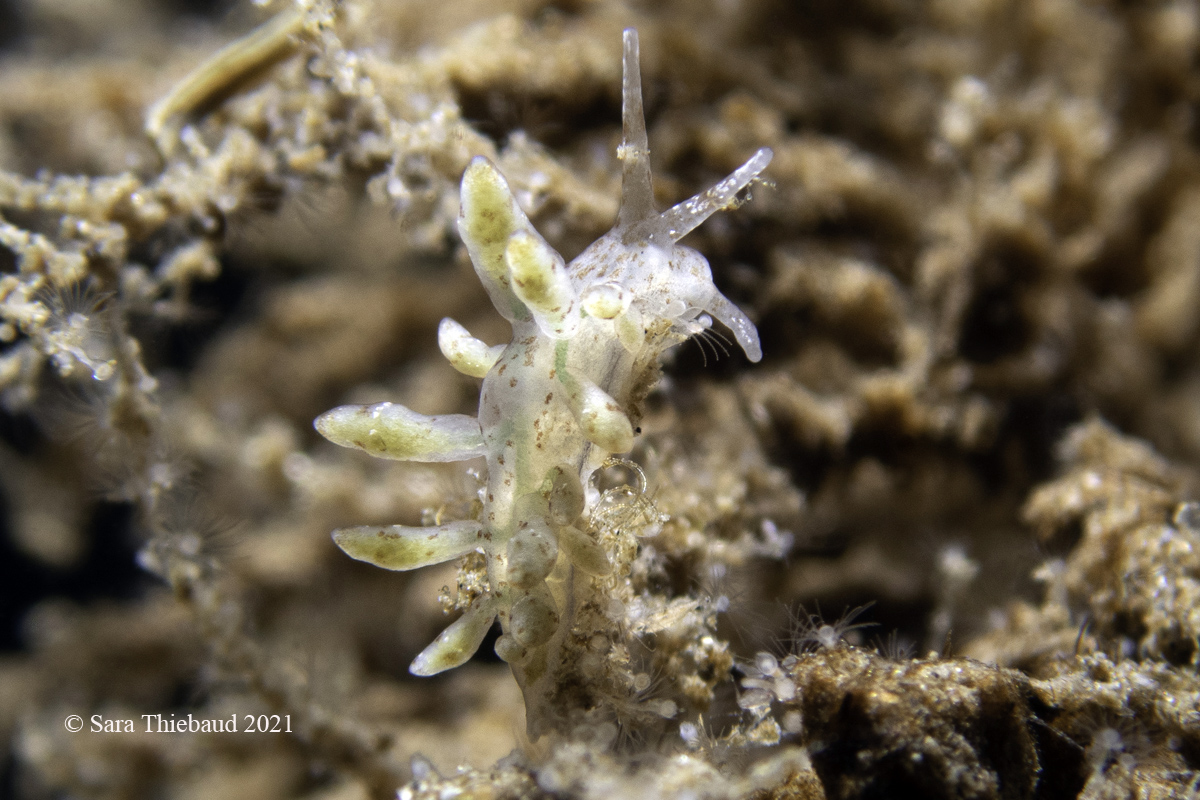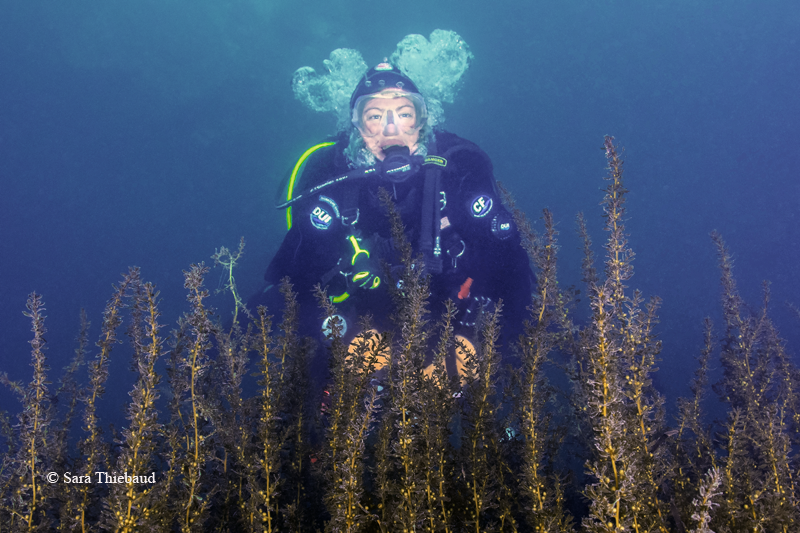 |
Image courtesy of Sara Thiebaud
Puget Sound, Washington
Image courtesy of Marc Chamberlain |
Eubranchus rupium (Moller, 1842) A couple of the Eubranchus species we have along this coast are a bit hard to ID, Eubranchus rupium, being one of them. Originally thought to be Eubranchus olivaceus (O'Donoghue, 1922), E. olivaceus was synonymized with E. rupium by Martynov (1998), following Just & Edmunds (1985). Eubranchus rupium has a circumboreal distribution, and can reach up to 11 mm in length. Although specimen vary in coloration, in general, the cerata are distinct, with a subterminal band of reddish-brown to olivaceous green. The cores are usually deep olivaceous green. The rhinophores are frosted with small, opaque white dots distally and with a subterminal band of brownish to olivaceous green. The body color is pale, translucent yellowish-green, with numerous light brown spots. References:
Just, H. & M. Edmunds (1985) North Atlantic Nudibranchs (Mollusca) Seen by Henning Lemche. Ophelia Publications: Marine Biological Laboratory, Helsingor, Denmark. 170 pp. |
Sara Thiebaud is an avid cold-water diver and nudibranch enthusiast. She is based in Seattle, WA, and enjoys looking for tiny invertebrates in the lovely Puget Sound. When not underwater, she works in vaccine research and can also be found cycling, knitting, and daydreaming about future dive travel! Sara uses an Olympus TG-6 with a Sea&Sea YS-03 strobe.
Send Sara email at sara.e.thiebaud@gmail.com
Dave Behrens
Sammamish, WA 98074
Apr., 2021
Send Dave email at davidwbehrens@gmail.com

Attention all you Sluggers, and you know who you are! The NSSI 2nd edition is now available in ebook PDF and book form . The hard back version will become available Nov. 1st. Both will cost $65 (individually). You will need to jump through a few hoops to get the electronic version as pdf distribution is protected by Adobe ID!! Please read the following to enable reading your electronic purchase! This new 2nd Edition is updated and reorganized, including 185 new species. Among other features, the new edition includes additional photographs of species, an identification key, and an up-to-date classification reflecting the latest evolutionary relationships. The Indo-Pacific represents the largest expanse of tropical ocean in the world, stretching from the Indian Ocean coast of southern Africa and the Red Sea to the central Pacific of the Hawaiian Islands, Easter Island and the Marquesas. This region supports the most diverse marine fauna of any place in the world for most groups of marine organisms. The nudibranchs and sea slugs are no exception to this rule; there are about 3,000 described species of these organisms in the world and at least 40% of these have been found exclusively in the Indo-Pacific tropics. This book illustrates 2,138 Indo-Pacific nudibranchs and sea slugs, including many undescribed species.
|

|
